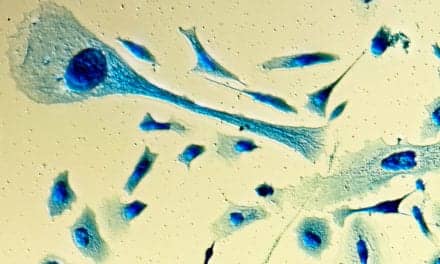New research demonstrates the ability of dogs to detect aggressive prostate cancer from urine samples and suggests that an artificial neural network could learn from this olfactory ability, with an eye toward replicating it in novel detection tools. Claire Guest of Medical Detection Dogs in Milton Keynes, UK, and colleagues present these findings in the open-access journal PLOS ONE on February 17, 2021.1
The widely used prostate specific antigen (PSA) screening test can miss aggressive prostate cancer in men who have it, or indicate that a cancer is aggressive when it really poses little risk. Alternative tests are being explored, and research has also shown that dogs can be trained to detect prostate cancer from urine samples with a high degree of accuracy. However, dogs would be impractical for large-scale screening.
In a pilot study, Guest and colleagues set out to combine the strengths of canine olfaction with those of other promising detection methods in order to surface new insights that could aid development of better prostate cancer tests.
The researchers trained two dogs to detect aggressive prostate cancer from urine samples. These dogs showed 71% sensitivity (ability to identify truly positive cases) and 70% to 76% specificity (ability to correctly identify negative cases) in detecting prostate cancer with a Gleason score of 9, indicating highly aggressive disease.
The team also applied two laboratory detection methods to the urine samples: Gas chromatography-mass spectroscopy analysis of volatile compounds and analysis of microbial species found naturally in urine. Both methods surfaced key differences between cancer-positive and cancer-negative samples.
Finally, the researchers used the dogs’ data to train an artificial neural network to identify specific portions of the spectroscopy data that contributed significantly to the dogs’ diagnoses. This also revealed specific differences between positive and negative samples.
The findings suggest that larger studies could further integrate these disparate methodologies in order to improve detection of advanced prostate cancer and aid development of new diagnostic tools that replicate dogs’ olfactory capabilities.
The authors add: “We’ve shown it is possible to replicate the dog’s performance as sensors and brains, it is now time to put this technology in every smartphone.”
Reference
- Guest C, Harris R, Sfanos KS, et al. Feasibility of integrating canine olfaction with chemical and microbial profiling of urine to detect lethal prostate cancer. PLoS One. 2021;16(2):e0245530. Published 2021 Feb 17. doi:10.1371/journal.pone.0245530
Featured image: Bloodhound dog (Photo 15698603 © Adogslifephoto | Dreamstime.com)





